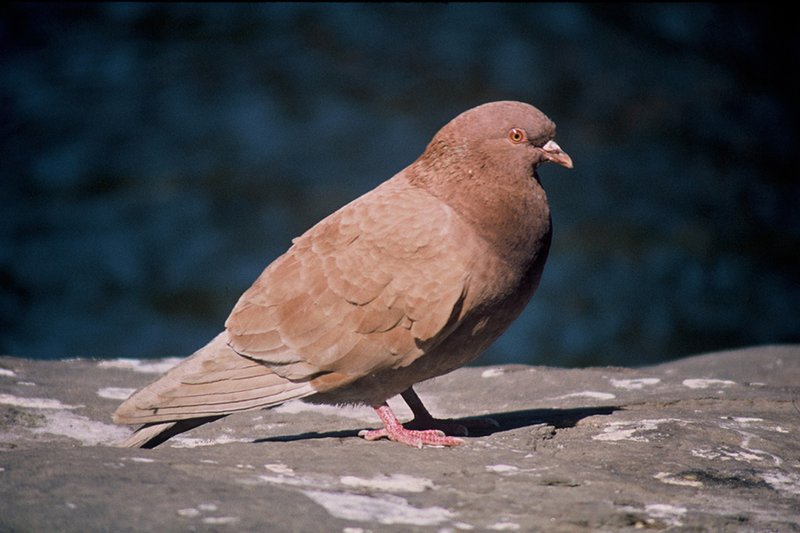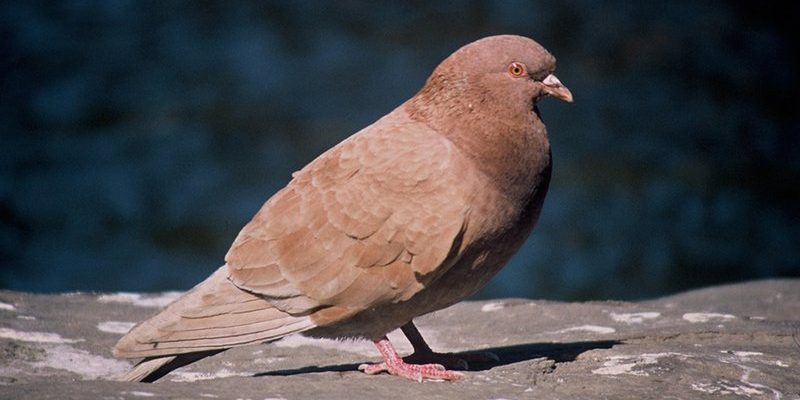
Picture this: a curious rock pigeon pecking around on the ground, eyes sharp and movements precise, searching for its next meal. It’s hard to imagine that something so common has developed such effective strategies for finding food. Let’s dive into the diet of the rock pigeon and explore the ways it goes about hunting or foraging, unraveling the story behind their survival in both urban and rural settings.
The Rock Pigeon’s Diet: What’s on the Menu?
You might be surprised to learn that rock pigeons have a varied and opportunistic diet. They are granivores, meaning they primarily eat seeds. However, their diet isn’t limited to just seeds. These birds are known for their adaptability and will consume whatever food is available, which includes grains, fruits, and even small invertebrates.
- Seeds: Rock pigeons love seeds, particularly those from plants like sunflowers, corn, and various grasses. In urban areas, they often scavenge seeds left behind by humans.
- Grains: They also feast on grains, making their way through fields and farms. Wheat and barley are particularly favorites.
- Fruits: When available, rock pigeons enjoy fruits—particularly berries, which are not only nutritious but also tasty.
- Invertebrates: Occasionally, they will snack on insects or earthworms when other food sources are scarce.
Rock pigeons are excellent foragers. Their strong eyesight helps them locate food items from a distance, and they can often find hidden grains in a patch of dirt or seeds scattered on sidewalks. They tend to eat what’s most available and convenient, showing off their resourcefulness.
Hunting vs. Foraging: What’s the Difference?
Now, you might be wondering—what’s the difference between hunting and foraging? For rock pigeons, the two terms are often used interchangeably, but they can have slightly different implications. Hunting usually refers to actively seeking out food, while foraging involves searching for and gathering food items from the environment. For rock pigeons, it’s mostly about foraging, but there are elements of hunting in how they gather their meals.
When foraging, rock pigeons use their keen eyesight to scan the ground. They often “hunt” for food by using their sharp perception to spot tasty morsels hidden amongst debris or grass. It’s less about chasing down prey and more about being on the lookout for a good snack.
How Rock Pigeons Forage: Strategies and Techniques
Rock pigeons are quite clever when it comes to finding food. They often rely on a few effective techniques to ensure they can locate what they need. Here are some of their foraging strategies:
- Ground Scratching: Pigeons will often scratch at the ground with their feet, revealing hidden seeds and grains underneath the surface. This technique is particularly useful in urban settings where humans have scattered food.
- Group Foraging: Pigeons are social birds. When they forage in groups, they can lead each other to food sources. If one bird spots food, others typically follow.
- Using Their Beaks: They have strong, conical beaks perfect for cracking seeds. Pigeons will peck at the ground, breaking open seeds and finding food more easily.
- Observing Other Birds: Sometimes, pigeons watch other birds to see where they are eating. This social aspect of foraging can lead them to new food sources.
These strategies showcase not just their adaptability, but also their intelligence. By combining these techniques, rock pigeons can thrive in environments that might seem harsh for other birds.
Seasonal Changes in Diet and Foraging Behavior
Just like us, rock pigeons change their eating habits with the seasons. In spring and summer, they benefit from an abundance of seeds, grains, and fruits. During these warmer months, they can find plenty of food from blooming plants and crops.
As the seasons shift to fall and winter, food becomes scarcer. This is when their foraging techniques really come into play. They might dig deeper into the ground for seeds or spend more time around urban areas where food scraps are more readily available.
Here’s how their diet changes throughout the year:
- Spring/Summer: Predominantly seeds, fruits, and young plants.
- Fall: A mix of grains and seeds, as crops are harvested.
- Winter: Relying more on urban food sources and whatever seeds they can uncover.
By understanding how their diet adjusts with the seasons, we can appreciate the rock pigeon’s adaptability even more.
Urban Adaptation: Thriving in City Environments
Rock pigeons are often dubbed “city birds” because they’ve adapted remarkably well to urban settings. In cities, their foraging habits change to take advantage of human activity. This adaptability plays a huge role in their survival.
Urban environments provide both challenges and opportunities. On the one hand, natural food sources are less consistent. On the other hand, city life offers a smorgasbord of human food scraps. Rock pigeons often gather in public places, like parks or sidewalks, where people might drop food.
Here are a few ways they adapt:
- Scavenging: They’re quick to take advantage of any food people leave behind—crumbs from snacks or seeds from bird feeders.
- Learning from Humans: Rock pigeons can become quite accustomed to human presence, allowing them to forage openly in areas where they might have otherwise been shy.
- Utilizing Structures: Urban landscapes provide perches and nesting sites, giving pigeons easy access to food sources nearby.
Their ability to thrive amidst human activity is a testament to their resilience and adaptability.
The Importance of Rock Pigeons in Our Ecosystem
You might not have considered it, but rock pigeons play a role in our ecosystems as they forage. While most people see them as common, these birds contribute to seed dispersal and the food web. When they eat seeds and fruits, they help plant species spread, which can be crucial for maintaining a balanced environment.
Additionally, rock pigeons serve as prey for various birds of prey and other animals, making them a vital part of the food chain. Their presence can indicate the health of urban ecosystems, showing us how well our cities can sustain wildlife.
Understanding the foraging behavior and diet of rock pigeons helps us appreciate the complexity of urban wildlife. They’re not just birds flying around; they’re important players in our ecosystem, adapting to the ever-changing urban environment.
In conclusion, the rock pigeon’s eating habits and foraging techniques are a fascinating glimpse into adaptation and survival. By watching these birds, we learn about resilience and resourcefulness in nature. So, the next time you’re out and about, take a moment to observe your local rock pigeons and appreciate the simple yet complex lives they lead.

